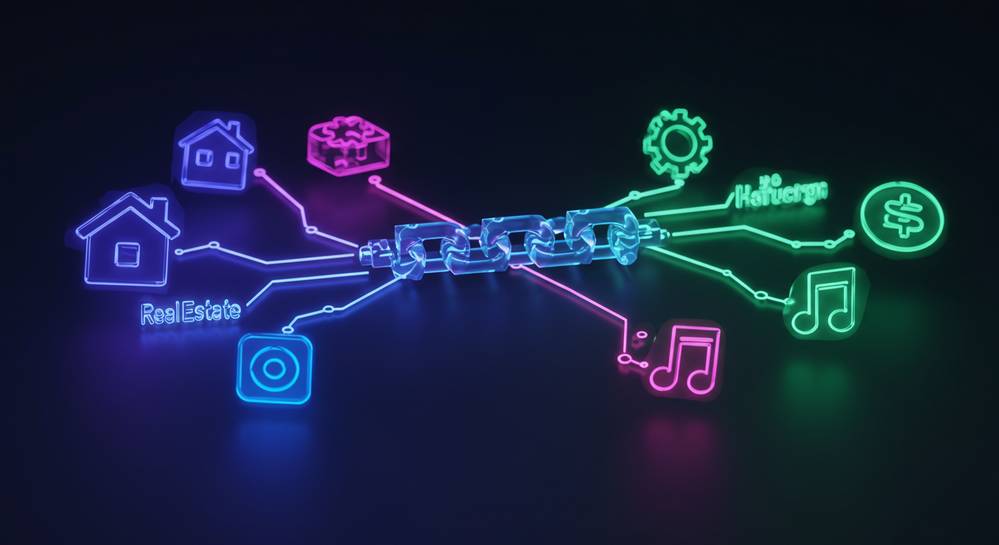For centuries, ledgers have been the backbone of commerce, recording transactions in a central book. But this traditional model relies on trust in a single authority. The modern world needs a more secure, transparent, and decentralized solution. This is where the revolutionary concept of what is a blockchain ledger comes into play, offering a new paradigm for how we record and verify information in a digital age.
The core components of a blockchain ledger

To understand what a blockchain ledger is, we must examine its fundamental building blocks. It is not a single entity but a system of interconnected components working together to create a secure and immutable record. Each element is critical to the integrity of this distributed ledger technology, ensuring that every transaction is permanent and verifiable by the network participants.
- Blocks: Each block acts as a page in this digital ledger. It contains a batch of transactions that have been verified, a precise timestamp, and a unique cryptographic identifier. Once a block is complete, it is permanently added to the chain.
- Cryptographic Hashes: A hash is a unique digital fingerprint for the data within a block. Generated by a complex algorithm, this fixed-length string of characters makes the data tamper-evident. Any change to the block data results in a completely different hash.
- The Chain: This is the security backbone of the ledger. Each new block is cryptographically linked to the one before it by including the previous block’s hash. This creates a chronological and unbreakable chain, making it computationally infeasible to alter past records without invalidating the entire sequence.
How a blockchain ledger differs from a traditional ledger
While both systems record transactions, a blockchain ledger represents a fundamental departure from traditional methods. The primary distinctions lie in their architecture, control, and security model. Understanding these differences is key to grasping the innovation behind what a blockchain ledger is and why it offers a new paradigm for trust and transparency in digital interactions. The shift is from a centralized, trust-based model to a decentralized, mathematically verified one.
| Feature | Blockchain Ledger | Traditional Ledger |
|---|---|---|
| Control | Decentralized. It is managed by a distributed network of participants with no single point of control. | Centralized. It is governed by a single, trusted authority such as a bank or corporation. |
| Data Structure | Data is grouped into cryptographically linked blocks, forming an immutable and chronological chain. | Typically a centralized database or physical book that can be updated by an administrator. |
| Immutability | Functionally immutable. Once a transaction is recorded, it cannot be altered or deleted by anyone. | Alterable. The central authority can modify or delete entries, sometimes without a clear audit trail. |
| Transparency | High. Transactions are often visible to all network participants, ensuring shared and consistent data. | Low. Access is restricted, and records are kept private to the controlling organization. |
| Verification | Transactions are validated by network consensus, requiring agreement from multiple participants. | Transactions are verified and approved internally by the central authority that controls the ledger. |
Key characteristics that make blockchain ledgers secure

The security of a blockchain ledger stems from a combination of interconnected characteristics, not a single feature. These properties create a robust, tamper-resistant system for recording data. This is why the technology is often described as trustless, as it relies on the system itself rather than a central party for verification. Understanding these security pillars is essential to knowing what a blockchain ledger is at its core.
- Decentralization: Instead of being stored centrally, the ledger is copied and spread across a network of computers. This distribution eliminates a single point of failure. An attack would require compromising a majority of the network, a task made nearly impossible by the underlying consensus algorithm.
- Immutability: Once a transaction is recorded and added to the chain, it cannot be altered or deleted. The cryptographic links between blocks ensure that any attempt to change historical data would be immediately detected and rejected by the network.
- Transparency: While participant identities can be pseudonymous, the transactions themselves are typically visible to everyone on the network. This shared visibility ensures all participants work from the same version of the ledger, promoting accountability and preventing fraud.
Real world applications beyond cryptocurrency

While famously introduced with Bitcoin, the blockchain ledger system has applications far beyond digital currencies. Its ability to create a secure, transparent, and unchangeable record is valuable for industries where data integrity is paramount. These real world use cases highlight its versatility and show the true potential of what a blockchain ledger is designed to accomplish in various sectors.
Supply chain management
Companies use a blockchain ledger to track goods from origin to consumer. This provides an unchangeable record at every step. It reduces fraud, confirms product authenticity, and improves transparency for all parties.
Voting systems
A blockchain based system can ensure each vote is recorded accurately and cannot be altered. Its decentralized nature makes the election process transparent and resistant to tampering. This ultimately helps increase public trust in the results.
Healthcare
Patient medical records can be securely stored on a blockchain, giving patients control over their data. This creates a single source of truth for a medical history. It allows authorized doctors to access accurate information, improving the quality of care.
Ultimately, a blockchain ledger is more than just a database; it is a foundational technology for creating trust in digital interactions. Its unique combination of decentralization, security, and transparency offers a powerful alternative to traditional record-keeping systems, paving the way for innovation across countless industries. To continue your learning journey and explore more in-depth topics, visit Dynamic Crypto Network for expert insights and analysis.
